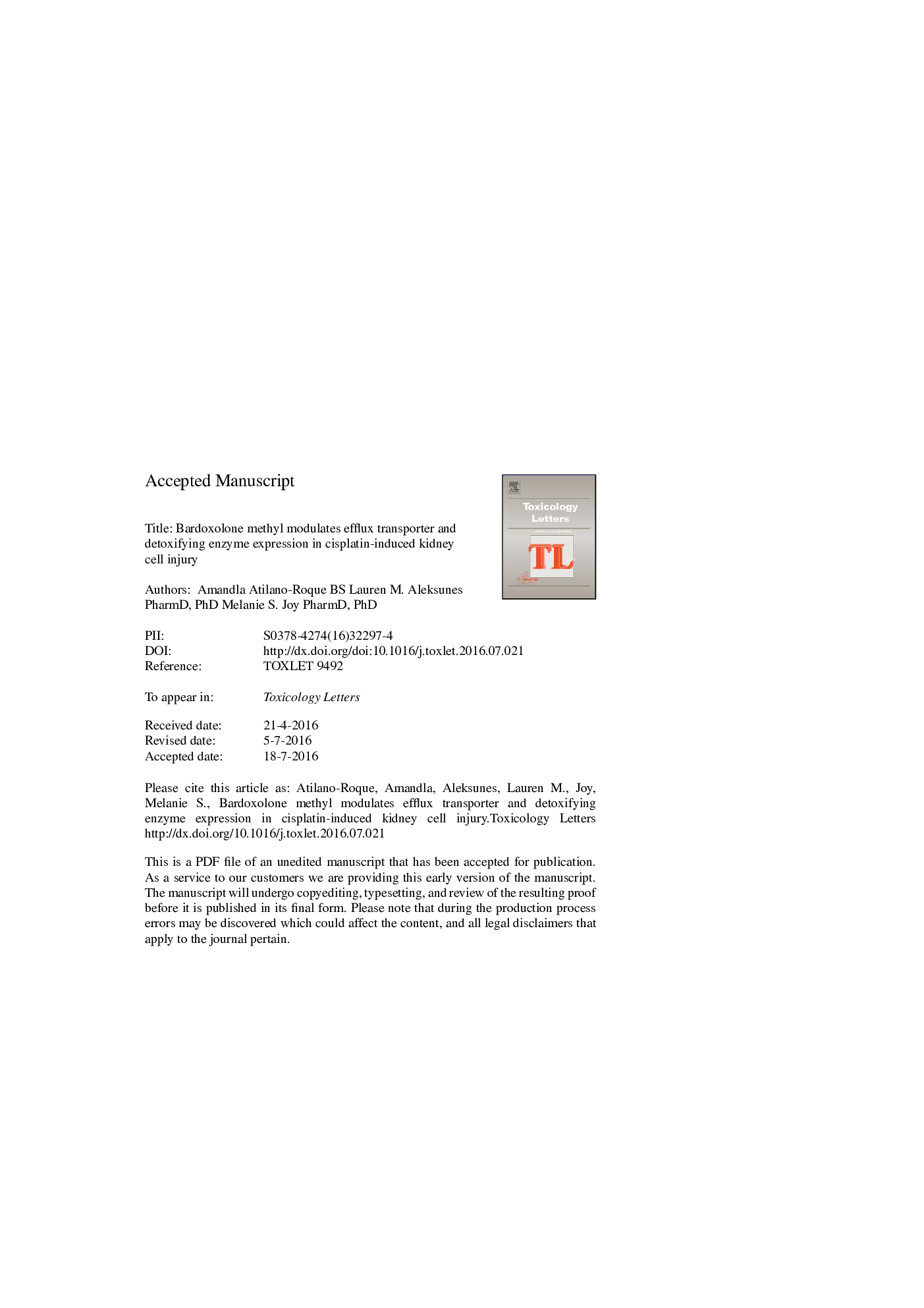| Article ID | Journal | Published Year | Pages | File Type |
|---|---|---|---|---|
| 5859689 | Toxicology Letters | 2016 | 25 Pages |
Abstract
Cisplatin is prescribed for the treatment of solid tumors and elicits toxicity to kidney tubules, which limits its clinical use. Nuclear factor erythroid 2-related factor 2 (Nrf2, NFE2L2) is a critical transcription factor that has been shown to protect against kidney injury through activation of antioxidant mechanisms. We aimed to evaluate the ability of short-term treatment with the Nrf2 activator bardoxolone methyl (CDDO-Me) to protect against cisplatin-induced kidney cell toxicity. Cell viability was assessed in human kidney proximal tubule epithelial cells (hPTCs) exposed to low, intermediate, and high cisplatin concentrations in the presence and absence of CDDO-Me, administered either prior to or after cisplatin. Treatment with cisplatin alone resulted in reductions in hPTC viability, while CDDO-Me administered prior to or after cisplatin exposure yielded significantly higher cell viability (17%-71%). Gene regulation (mRNA expression) studies revealed the ability of CDDO-Me to modify protective pathways including Nrf2 induced detoxifying genes [GCLC (increased 1.9-fold), NQO1 (increased 9.3-fold)], and an efflux transporter [SLC47A1 (increased 4.5-fold)] at 12Â h. Protein assessments were in agreement with gene expression. Immunofluorescence revealed localization of GCLC and NQO1 to the nucleus and cytosol, respectively, with CDDO-Me administered prior to or after cisplatin exposure. The findings of enhanced cell viability and increased expression of detoxifying enzymes (GCLC and NQO1) and the multidrug and toxin extrusion protein 1 (MATE1) efflux transporter (SLC47A1) in hPTCs exposed to CDDO-Me, suggest that intermittent treatment with CDDO-Me prior to or after cisplatin exposure may be a promising approach to mitigate acute kidney injury.
Related Topics
Life Sciences
Environmental Science
Health, Toxicology and Mutagenesis
Authors
Amandla BS, Lauren M. PharmD, PhD, Melanie S. PharmD, PhD,
